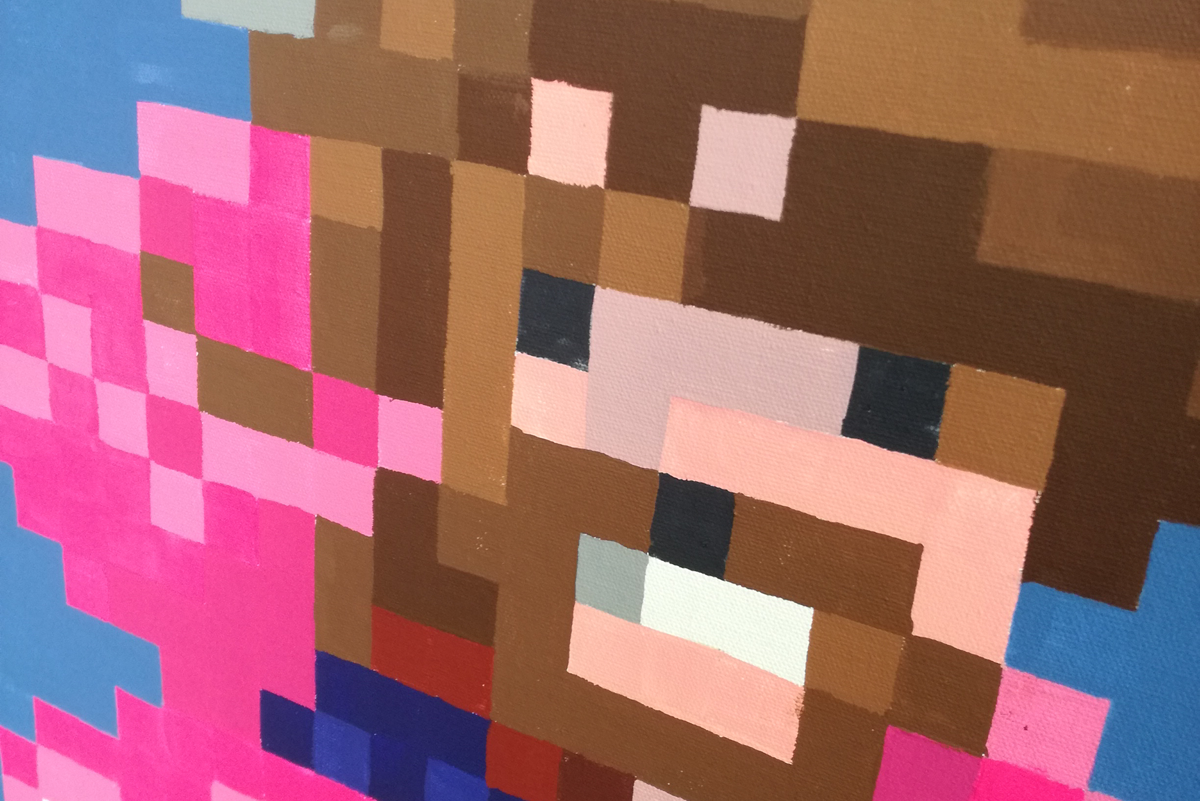The characters are the real interface inbetween the gamer and the game. I like to experiment on the range of additional meanings, that can be read discovered in those sprites, besides their predetermination due to gaming mechanics and fandom.
Pixel pioneers are the first works produced in 2018. It consists of currently 5 finished acrylic paintings on canvas, all depicting a single gaming character close to his original 8bit pixelated sprite map in portrait format. Those pioneers all have a very specific reason to be put into this ancestral arcade gallery. Each of them represents a major update in video gaming content or mechanics and therefore has become a crucial icon of gaming history.
Jumpman was bound to become maybe not the most iconic, but most known video gaming hero of the last four decades. He’s part of the gallery as being in the first arcade videogame ever, with a story introduction: Donkey Kong (1981).
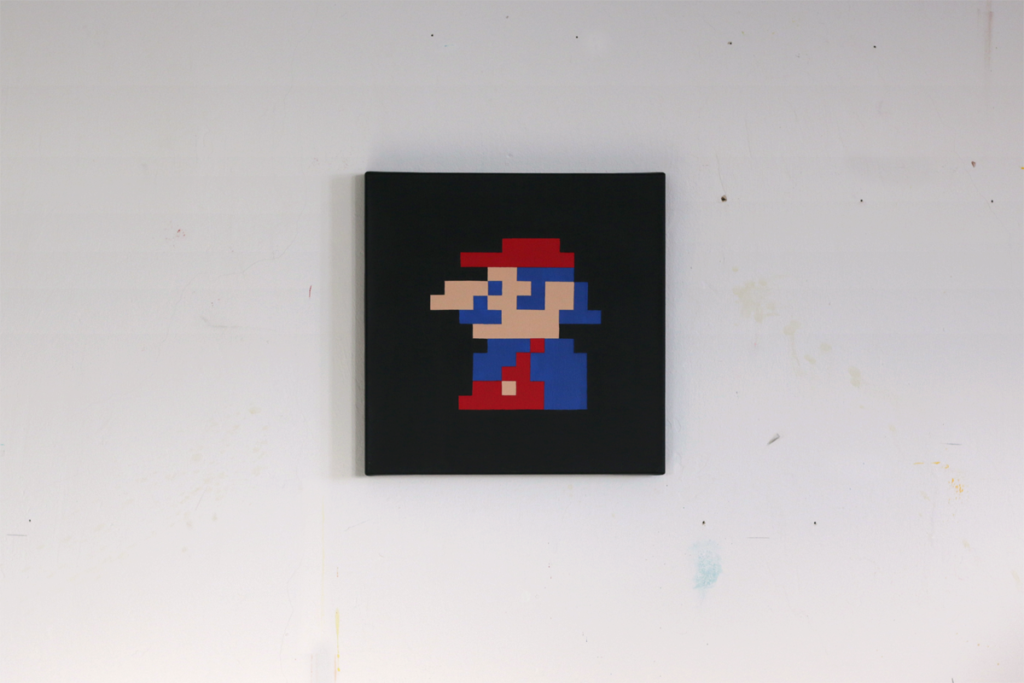
Jumpman, 40 x 40 cm, 2019.
Commander Keen can be considered the first smooth side-scrolling jump’n’run game hero specifically created for Personal Computers, due to the Adaptive Tile Refresh their programmers invented. Thus, the PC upgraded itself to become a serious gaming platform option, too.
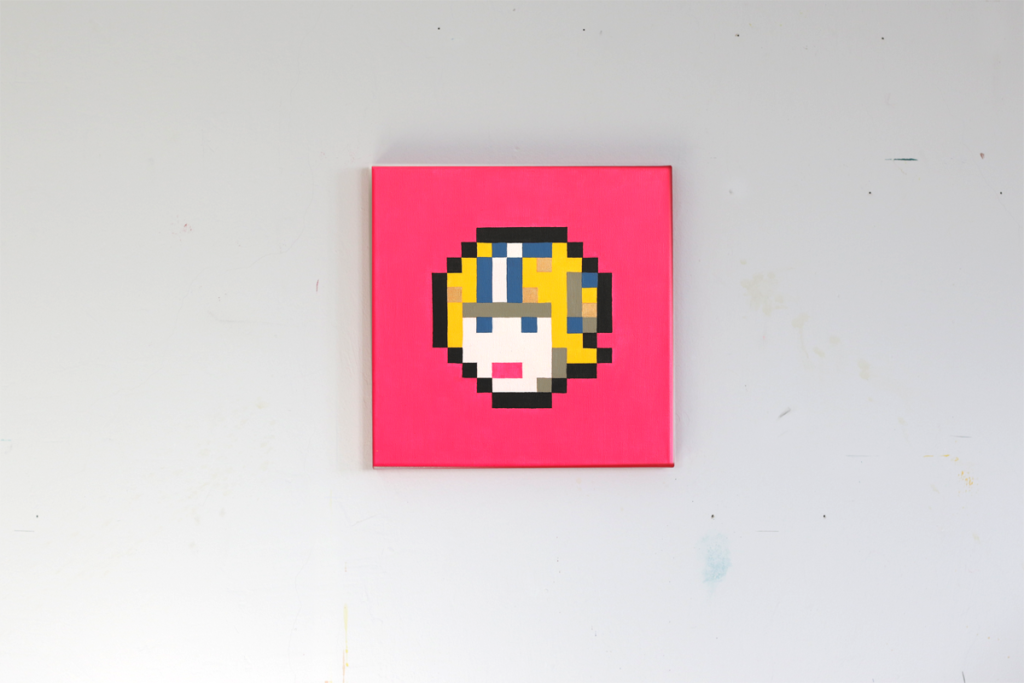
Commander Keen, 40 x 40 cm, 2018.
privately owned
Three of those paintings are grouped together, each showing a female character. While there have been female characters before, these three can be considered the very first three female feminist human protagonists in video gaming history.
Kurumi-Hime is the very first women heroine ever playable in an action video game. Her career in early 1984 was short-lived, being replaced by a male character while the game was published on the Sega Master System console.
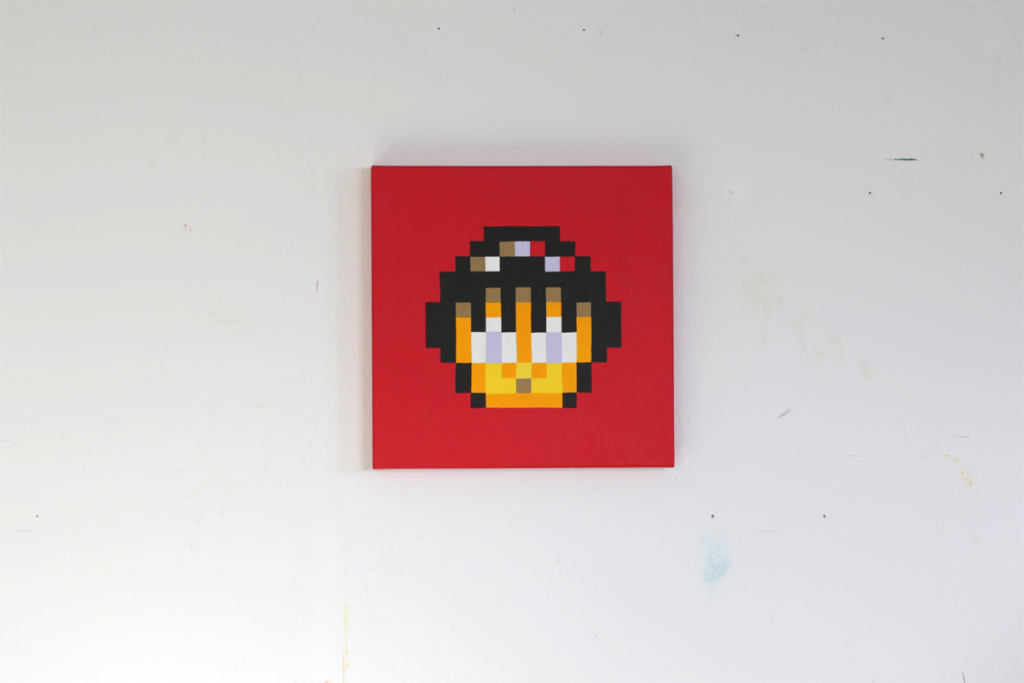
Kurumi-Hime, 40 x 40 cm, 2019.
Kissy Masyo followed in her wake as the first non-sexualized heroine. Wearing a helmet for the whole duration of the game, her gender was a well-kept secret until successfully finishing the game.
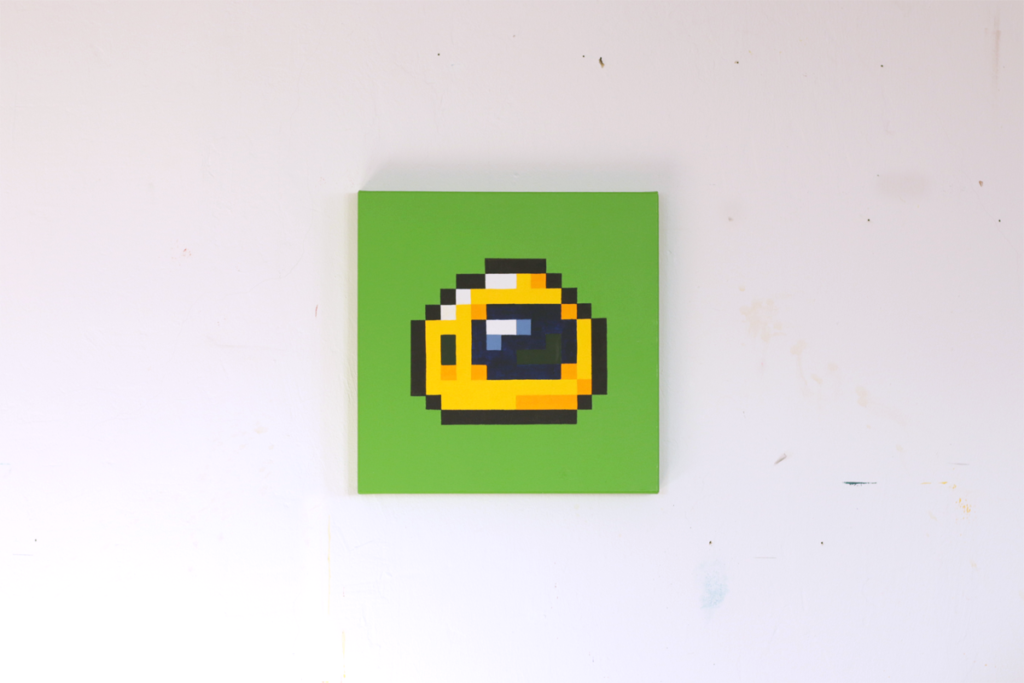
Kissy Masyo, 40 x 40 cm, 2019.
Samus Aran might be considered by many the symbol of woman emancipation in videogames. Being not the first lady kicking butts, she surely made feminist gaming heroines a global success story, thanks to the distribution on Nintendos Famicon and NES Systems in 1986.
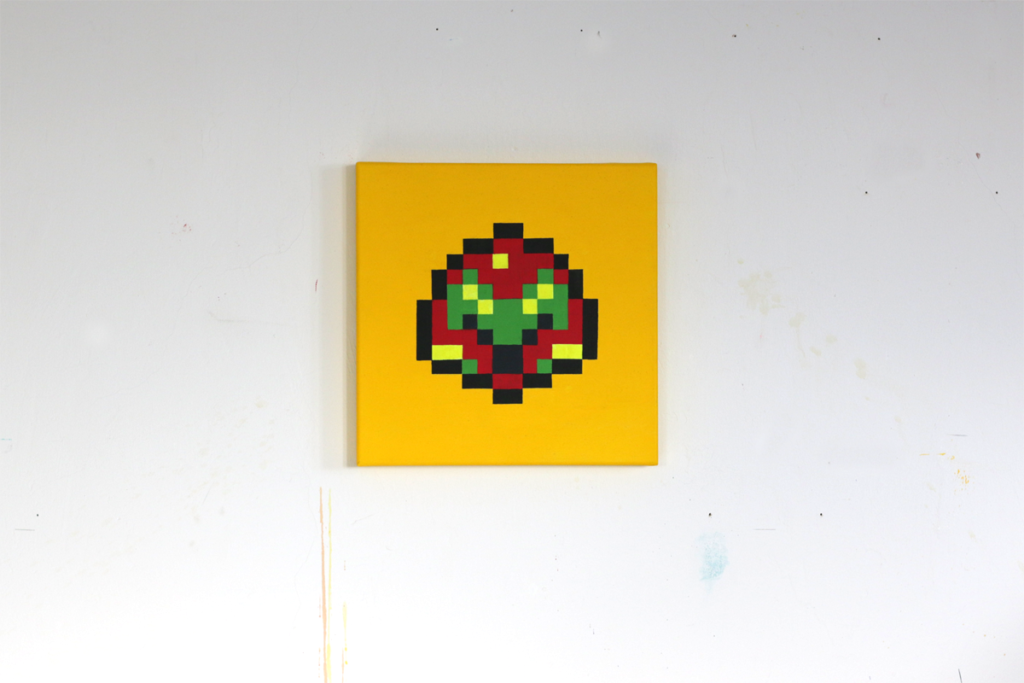
Samus Aran, 40 x 40 cm, 2018.
Gomez is a pretty young pioneer. Since 2012 he never uses violence and is considered the character of a very disputable gameplay. Why he made it into the selection, nobody really knows. He still needs being painted.
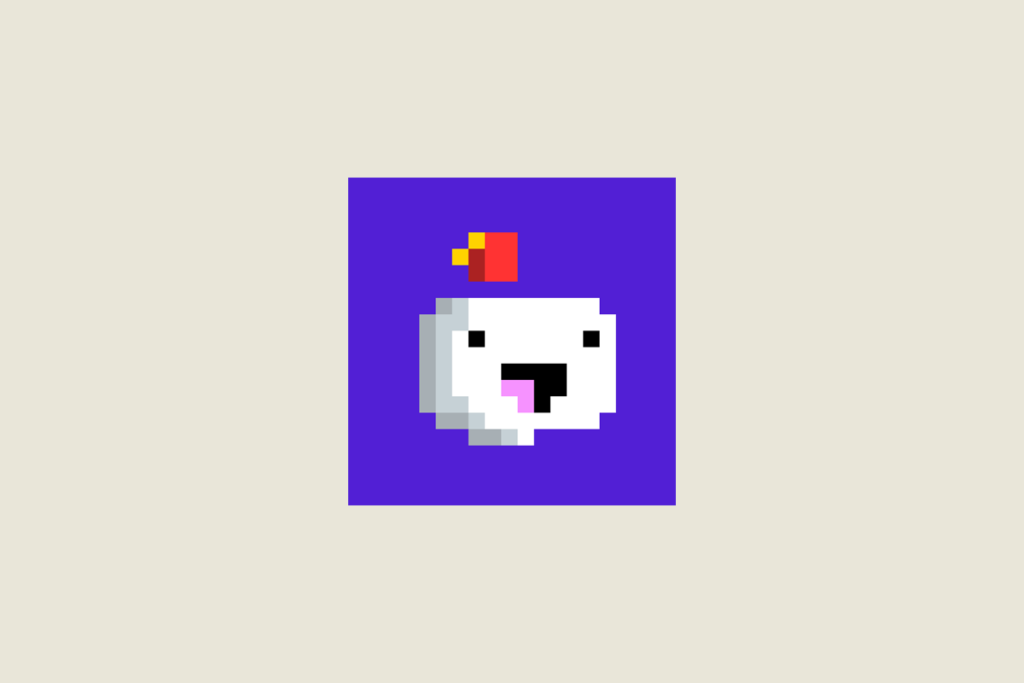
Gomez, 40 x 40 px, digital sketch, 2019.
Rockman needs his portrait to be painted. He appeared in the first game concept, where the player could freely choose their level sequence, in doing so introducing the open world concept in gaming.
Unnamed Hero is not painted yet. Like many mystic heroes in history, this unnamed hero explored dark pixel dungeons like others before him. This time, in the game called Dandy up to four players could team up doing simultaniously, in so introducing multiplayer gaming to the world.
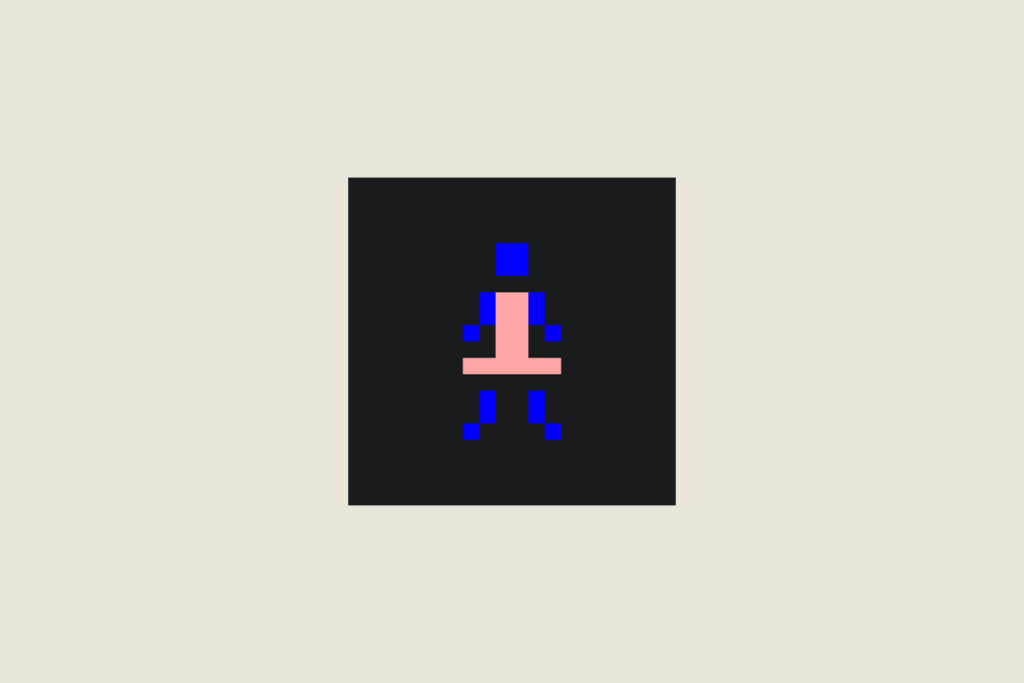
Unnamed Hero (Dandy), 40 x 40 px, digital sketch, 2019.
Heroes not at work is a group of works currently consisting of 4 large scale paintings. The painting consciously showing famous video game characters out of their usual context. Showing them in unfamiliar but everyday life settings is an attempt to remove the characters out of their stereotypical predetermined behaviours and a comment on the contemporary hero narrations in general.
Call me Guyflush Bramingo! really needs no further explanation. The message is bright and clear: narcissism is a blessing and a curse.
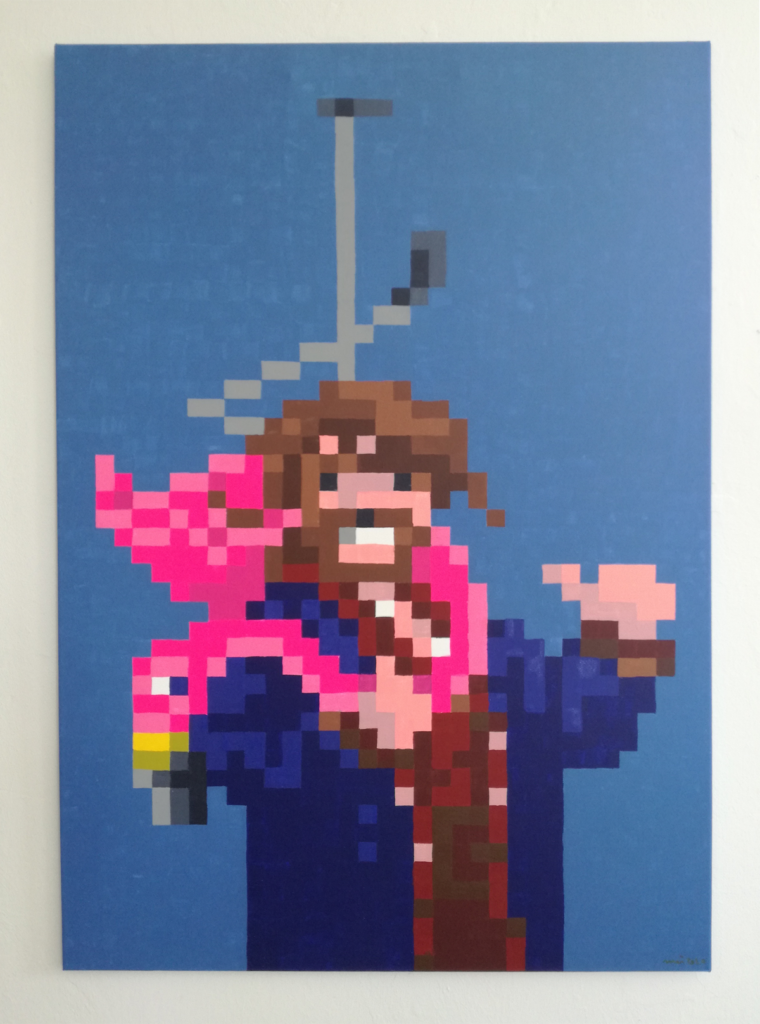
Call me Guyflush Bramingo!, 80 x 100 cm, 2020.
privately owned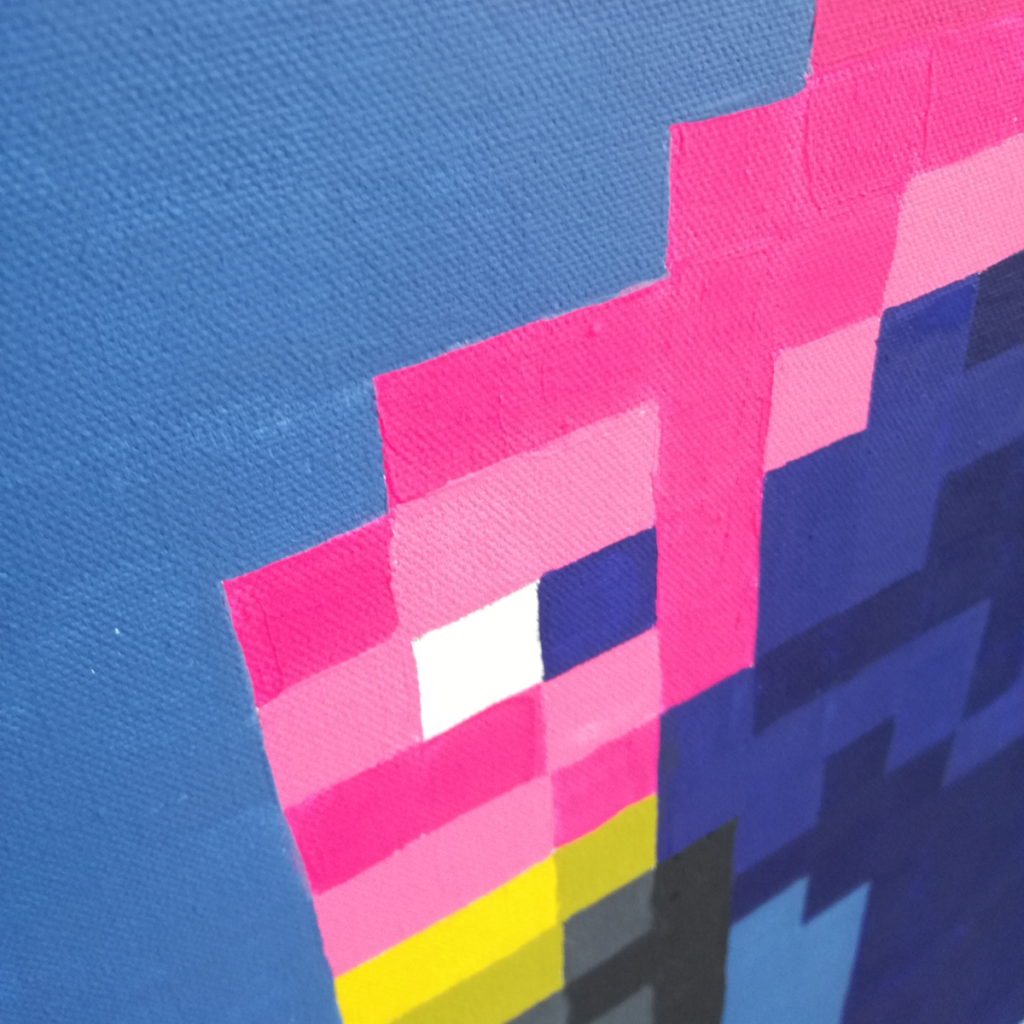
Call me Guyflush Bramingo!, detail
Rockman taking off is a medium sized acrylic painting in portrait orientation. The iconic character of Rockman (later knows as Mega Man) is risen up by a bunch of balloons, his gaze enraptured by something unknown. The color palette uses softened and toned hues, giving the apperance of an overall pink filter applied on the image. The scene is framed by a wide frame, the balloons being the only element overlapping the frame. The image represents a hidden desire of an everbusy gaming hero: escapism.
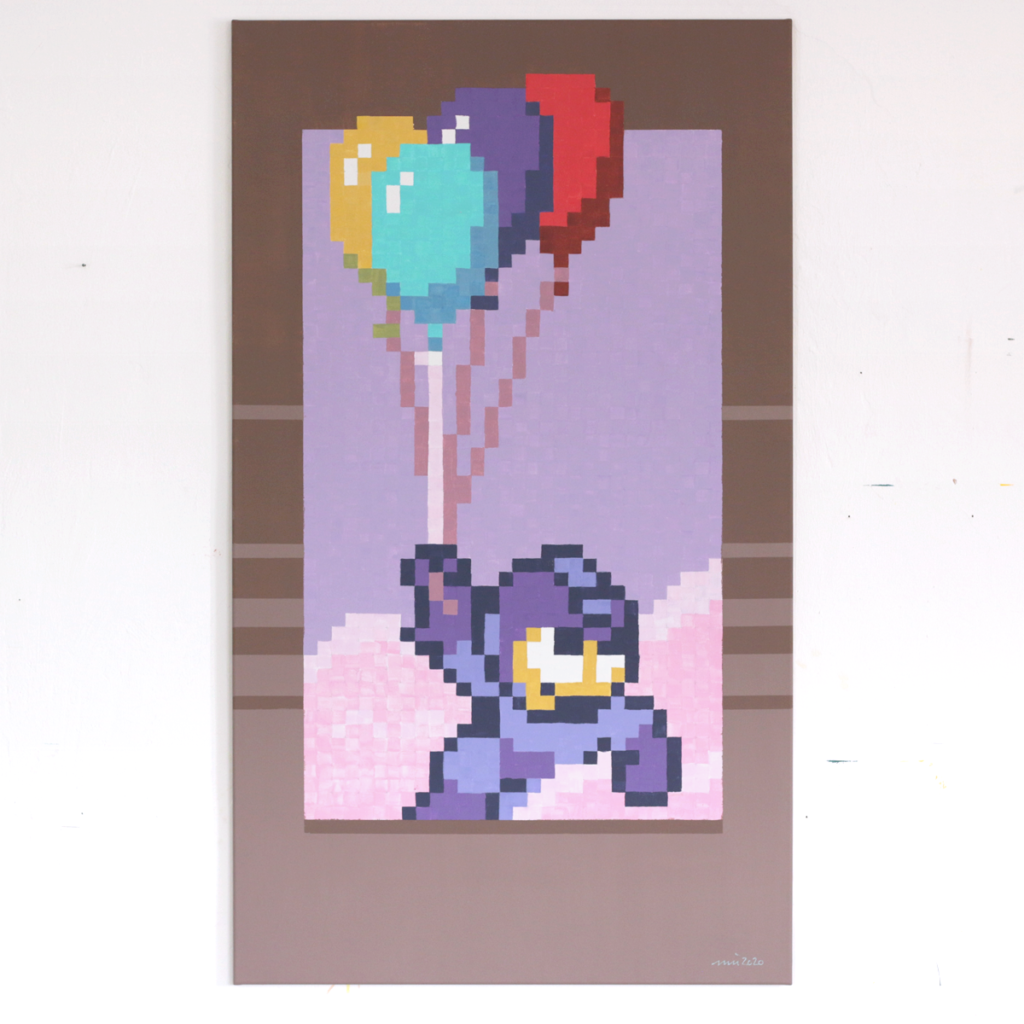
Rockman takes off. 80 x 130 cm, 2020. 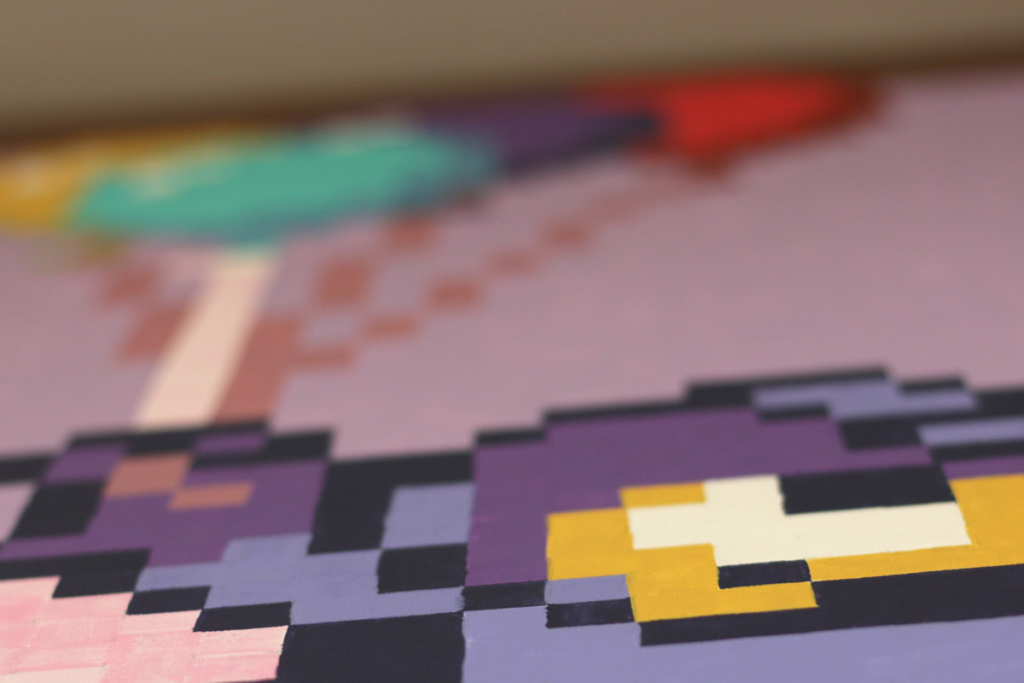
Rockman takes off, detail.
Rockman takes a break is an acrylic painting in horizontal orientation, which is emphasized by using partial framing on the upper and lower part of the image. In this 16:9 tableau two characters opposing each other, quoting the classic fighting sequences of early role-playing games and the Pokemon game series. On the left is Rockman seen from behind, happily whistling a tune while peeing – he seems carefree about his actions. On the right side a character sprite from Bomberman is watching the scenery. Those two sprites never met due to the fact of being placed in two different games, but both characters seem to handle the first encounter differently.
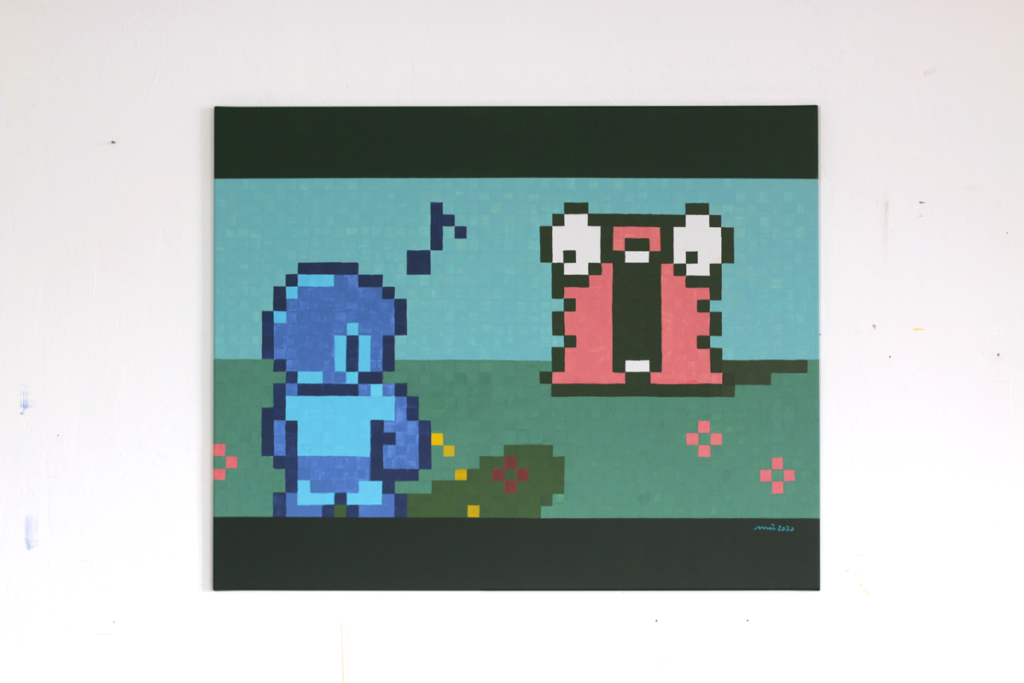
Rockman takes a break, 140 x 100 cm, 2020. 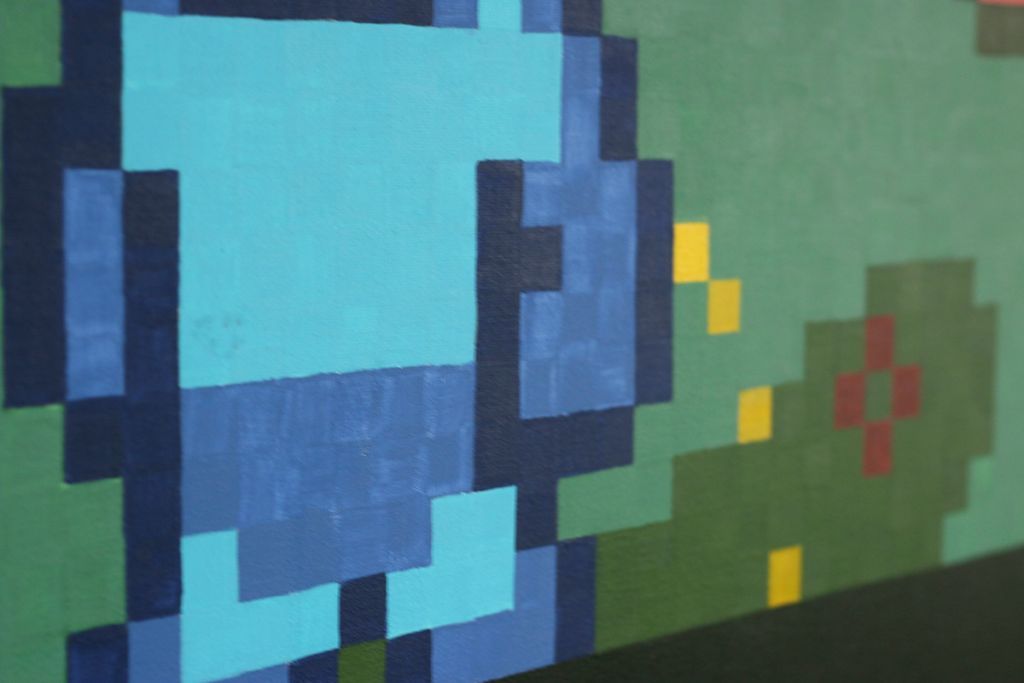
Rockman takes a break, detail.
Dr. Mario deals again is an acrylic painting in horizontal orientation. It shows one of the most busiest heroes in all video game history in a funky blend of pop culture, drug abuse, truth and the never-ending human love of being scared by unseen enemies.
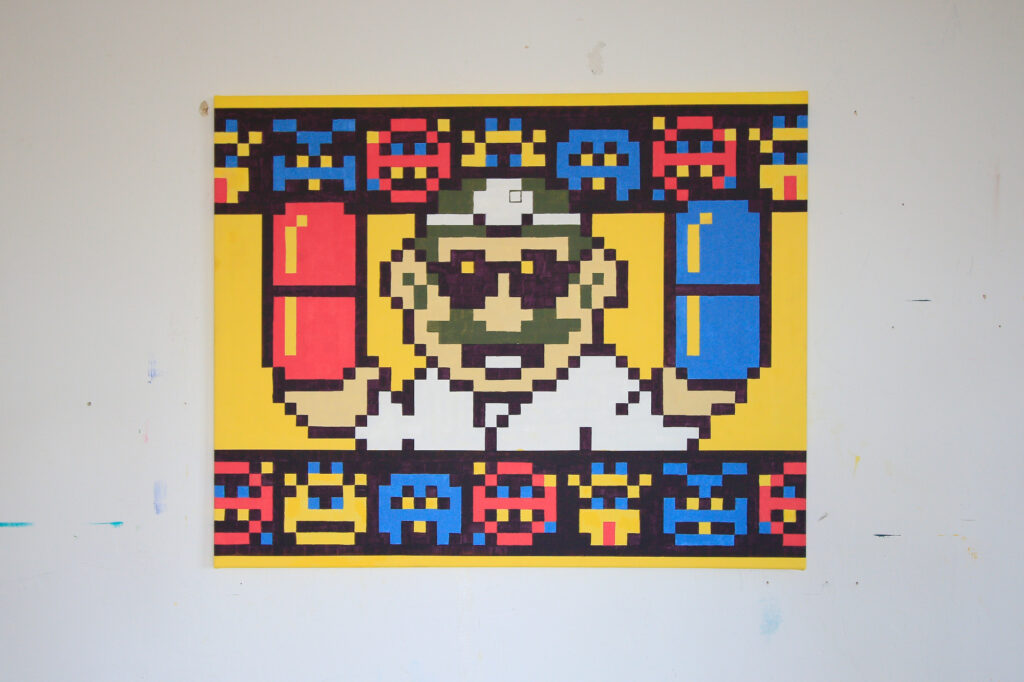
Dr. Mario deals again, 100 x 80 cm, 2022.
There’s plenty of other pixel paintings to discover! And if you feel like it: In case you need one of those masterpieces: Let’s get in touch.

